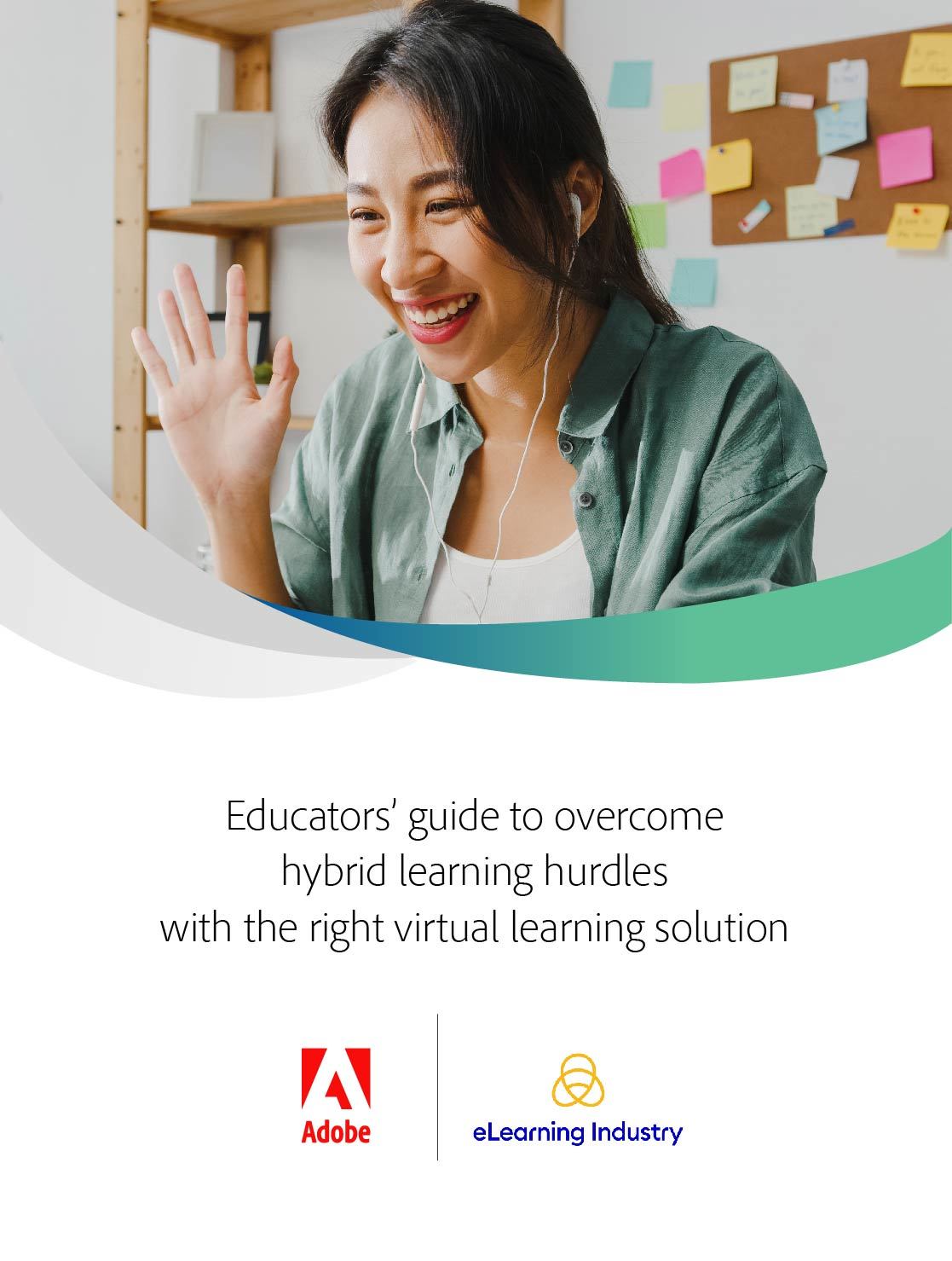How to build an online learning community that supports online students
Learning as a whole has changed significantly in recent times. With virtual education leading the way, many may think that people don’t learn the way they used to. However, the truth is that although the means have changed, the core of learning remains the same. People still thrive in social environments that promote collaboration, discussion and exchange of knowledge. In this chapter, we reveal 6+1 tips to help you use your advanced online conferencing tool to build an online learning community that empowers students and increases engagement.

eBook release
Educator’s Guide to Overcoming Hybrid Learning Barriers with the Right Virtual Learning Solution
This ultimate teacher’s guide is designed to help you overcome common hybrid learning challenges and find the best platform for your organization.
What is an online learning community?
An online learning community is a group of people with similar learning goals. It is usually composed of one (or more) instructor(s) and several online students. Both educators and learners prefer it because it provides a platform where people can exchange information, discuss relevant issues and seek support. Such communities add value to the learning experience, foster engagement, and help learners acquire and retain knowledge in more effective ways.
But how can you use? digital learning solutions to encourage communication and ultimately build a collaborative online learning community? In the next section of the chapter, we’ll share 6+1 steps to help you achieve this.
6+1 ways to build an online learning community
1. Break the Ice
The first step in building an online learning community using a web conferencing tool is breaking the ice. At the beginning of your online course, create a short video introducing yourself and welcoming the participants, encouraging them to do the same. In this way, online students are directly involved in the learning process and get a first glimpse of the people they will be working with in the future. These introductory videos are also helpful for educators as they help them identify students with similar interests so they can later group them together for collaborative work.
2. Keep everyone informed
To create a sense of community, you need to give students reasons to return to the learning platform. One way to do that is to keep everyone updated on relevant news. Send announcements via email, social media or the platform itself to keep everyone informed about events, live conference schedules, project deadlines or upcoming courses. This can also be a good place to share outside news relevant to your topic. An active news feed helps everyone stay on top of what’s important and feel involved
3. Encourage questions
In an online learning community, communication between all parties is easy. Most importantly, students can ask questions and answer them quickly. Set up Q&A pods where online students can enter their questions so you can discuss them during live conferences. This promotes communication and ensures that no question is forgotten. Make sure these pods are visible to all participants to help more than one student at a time.
4. Schedule Synchronous Meetings
Understandably, people turn to online learning to take advantage of its flexible schedule. However, meeting in real time is crucial in building an online learning community† It is a time when students get to know each other, recognize faces and names, and identify common hobbies or interests. Depending on the number of participants, you can set a time that works for everyone or schedule a few synchronous sessions at different times to fit everyone’s schedule.
5. Start discussions
Online learning communities are created through the opportunity to express and discuss points of view on relevant issues. That’s why you need to help your audience engage in debate using synchronous and asynchronous tools. Synchronous discussions take place via live conferences or real-time chat, creating a sense of immediate response and promoting rapid problem solving. Asynchronous discussions have a slower pace, giving participants more time to consider their answers and foster meaningful and fact-based dialogue. In any case, remember to start topics yourself and actively participate in the debate. In this way, students are encouraged to post questions and comments that can fuel future discussions.
6. Promote group learning
Collaborative learning adds a personal touch to online courses by bringing students together and reducing feelings of isolation. When you encourage students to work together, the interaction between them becomes easier and they begin to form relationships. This way they feel more motivated to participate and the overall learning experience becomes more personal. Advanced web conferencing solutions come with many features that promote group learning, the most useful of which are breakout rooms. Use them to provide participants with a place to prepare projects and presentations or work on exercises, simulations, scenarios, etc.
Bonus tip: use gamification
With all the app integrations and features included in advanced online meeting tools, gaming your online content is no longer too much of a challenge. But how would gamification help build an online learning community? The answer lies in developing conditions for healthy competition. When you gamify your course, you can ensure that students earn pins and badges when they complete an assignment. You can take it one step further and create a leaderboard for extra motivation. These features can make learning more fun and engaging while also creating a topic for discussion.
Conclusion
Online learning communities are essential in virtual learning. They help students become actively involved in the learning experience and encourage knowledge acquisition through group learning. Advanced web conferencing solutions come with many features that facilitate social learning. Follow the tips we’ve shared in this section and make the most of these features to create a collaborative online learning community that adds significant value to your online course.
Download the eBook Educator’s Guide to Overcoming Hybrid Learning Barriers with the Right Virtual Learning Solution to overcome the obstacles that stand in the way of hybrid learning success.
